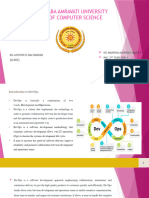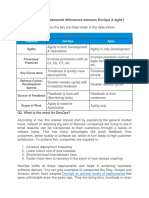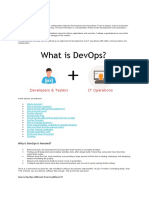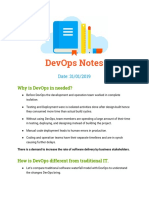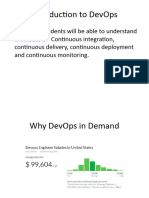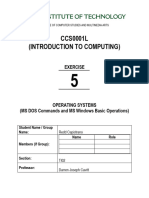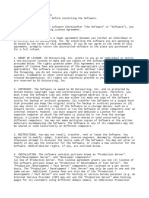0% found this document useful (0 votes)
18 views9 pagesCHP 1 DevOps
The document provides an overview of DevOps, contrasting it with traditional software development approaches like Waterfall and Agile methodologies. It outlines the objectives, lifecycle, and delivery pipeline of DevOps, emphasizing the importance of collaboration, automation, and continuous improvement. Additionally, it discusses tools, case studies, market trends, and the skills required for a DevOps engineer, highlighting the benefits of implementing DevOps practices in various industries.
Uploaded by
divyakesarkar2003Copyright
© © All Rights Reserved
We take content rights seriously. If you suspect this is your content, claim it here.
Available Formats
Download as PDF, TXT or read online on Scribd
0% found this document useful (0 votes)
18 views9 pagesCHP 1 DevOps
The document provides an overview of DevOps, contrasting it with traditional software development approaches like Waterfall and Agile methodologies. It outlines the objectives, lifecycle, and delivery pipeline of DevOps, emphasizing the importance of collaboration, automation, and continuous improvement. Additionally, it discusses tools, case studies, market trends, and the skills required for a DevOps engineer, highlighting the benefits of implementing DevOps practices in various industries.
Uploaded by
divyakesarkar2003Copyright
© © All Rights Reserved
We take content rights seriously. If you suspect this is your content, claim it here.
Available Formats
Download as PDF, TXT or read online on Scribd
/ 9





